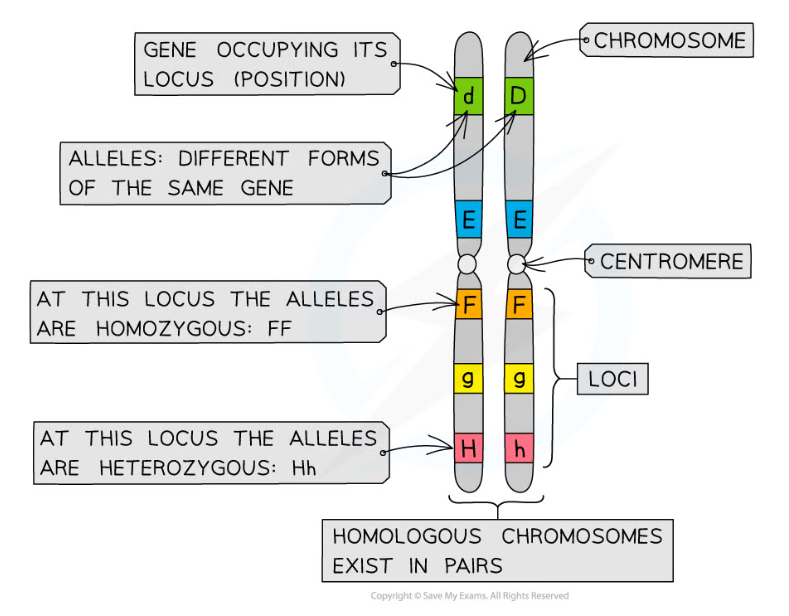- 翰林提供学术活动、国际课程、科研项目一站式留学背景提升服务!
- 400 888 0080
Edexcel A (SNAB) A Level Biology:复习笔记3.3.3 Genes & Linkage
Locations of Genes on a Chromosome
- Every chromosome consists of a long DNA molecule that contains several hundred or even thousands of different genes coding for different proteins
- A length of DNA that codes for a single polypeptide or protein is called a gene
- The position of a gene on a chromosome is known as its locus (plural: loci)
- Through experiments and genetic mapping techniques, scientists have been able to work out the specific physical locations of the genes on different chromosomes
- Each gene occupies a specific locus so that the gene for a particular characteristic is always found at the same position on a particular chromosome
- Each gene can exist in two or more different forms called alleles
- Different alleles of a gene have slightly different nucleotide sequences but they still occupy the same position (locus) on the chromosome

Five different genes found at five different loci
Autosomal Linkage
- As its name implies, autosomal linkage only occurs on the autosomes (any chromosome that isn’t a sex chromosome)
- Two or more genes on the same autosome do not assort independently during meiosis
- Instead, these genes are linked and they stay together in the original parental combination
- These linked genes are passed on to offspring all together (through the gametes)
Sex Linkage
- There are two sex chromosomes: X and Y
- Females have two copies of the X chromosome (XX), whereas males have one X chromosome and one shorter Y chromosome (XY)
- Some genes are only present on one sex chromosome and not the other
- As the inheritance of these genes is dependent on the sex of the individual they are known as sex-linked genes
- Most often sex-linked genes are found on the longer X chromosome
- If the gene is on the X chromosome, males (XY) will only have one copy of the gene, whereas females (XX) will have two
- Because males only have one X chromosome, they are much more likely to show sex-linked recessive conditions (such as red-green colour blindness and haemophilia)
- Females, having two copies of the X chromosome, are likely to inherit one dominant allele that masks the effect of the recessive allele
转载自savemyexams

最新发布
© 2026. All Rights Reserved. 沪ICP备2023009024号-1









